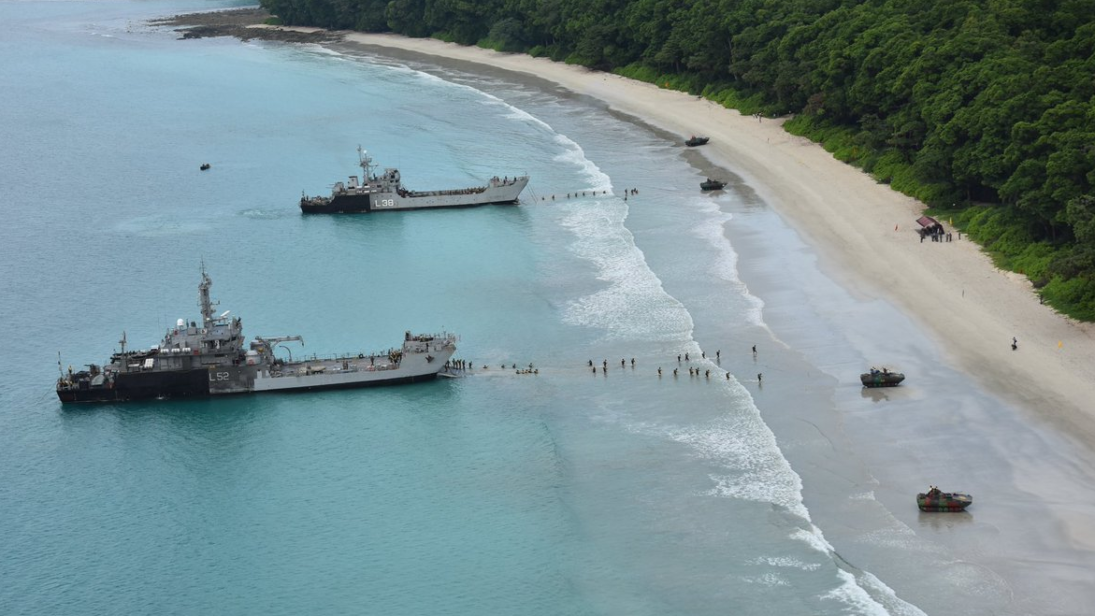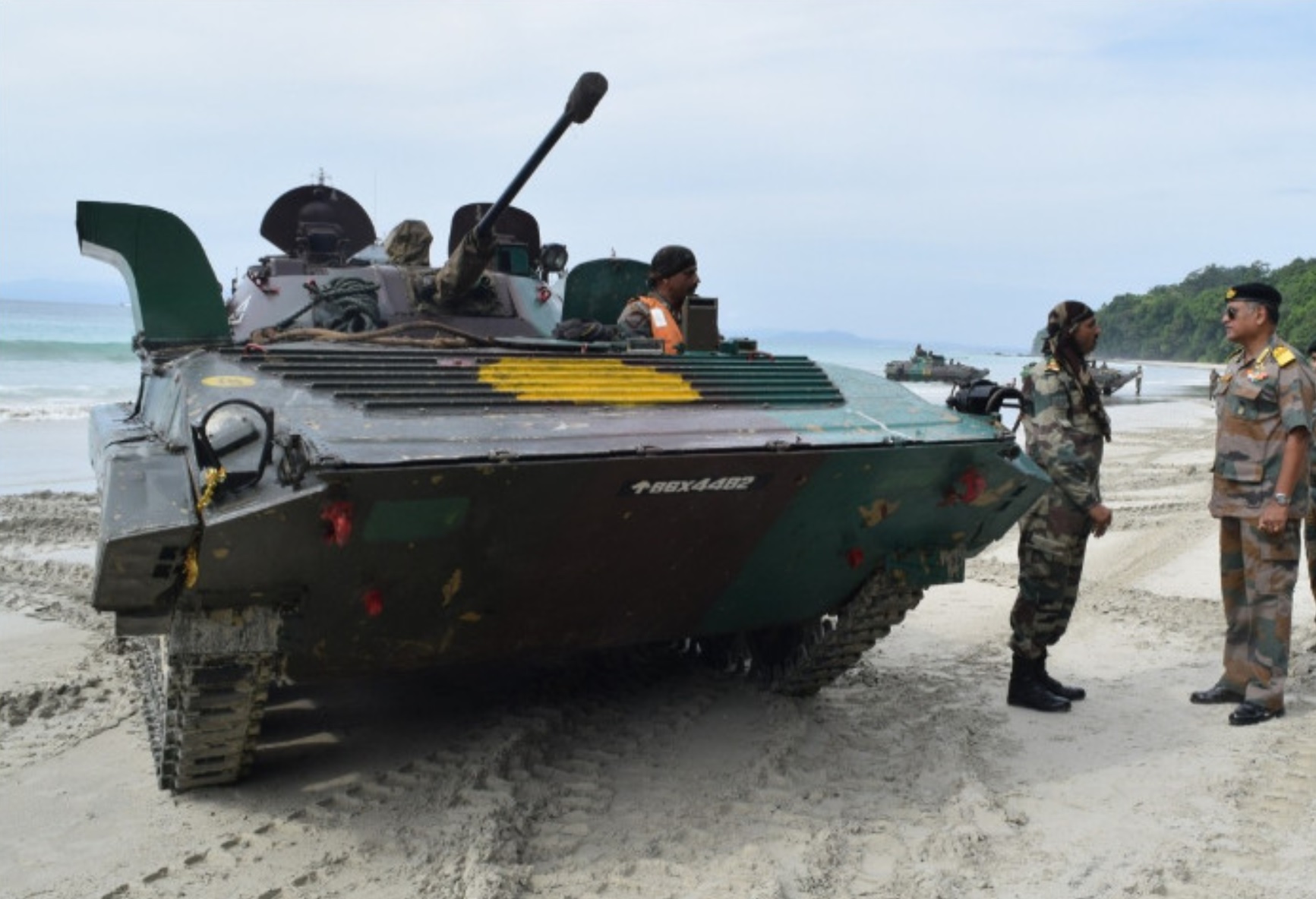
Often seen as India’s outpost in the east, the Andaman and Nicobar Islands (ANI) have increased in strategic value in recent years. Situated just 140 kilometers from the shipping lanes of Malacca and around 1200 kilometers from the Indian mainland, the islands’ geographic centrality at the heart of the Bay of Bengal has been integral to their growing importance. Externally, the strategic potential of ANI has been heightened by an increasing Chinese footprint in the Indian Ocean Region (IOR) and its emergence as a geostrategic theater complimented by its economic vitality. While the location of the ANI provides India with a strategic advantage to its east, the great distance from the mainland also isolates the archipelago and has hindered its infrastructural development.
As New Delhi seeks a larger role in the region, it is aiming to build a stronger strategic position in its own backyard—the IOR. With India’s centrality allowing for easy movement across the IOR and with the dominance of the Indian Navy in this theater, Prime Minister Modi is prioritizing the IOR as a key component of his policies. India is factoring the ANI into its maritime power projection capabilities, with a view to securing its role as a net security provider in the region, and to establish connections to the east. The ideal balance for New Delhi with regards to ANI will be three-pronged—transforming the islands into a strategic asset, integrating the islands with the mainland, and safeguarding local ethnic concerns.
New Delhi’s Approach
India’s first landmark decision to utilize the islands to secure its national interests came in 2001 with the establishment of India’s only tri-services command on the islands, the Andaman and Nicobar Command (ANC). The ANC is primarily responsible for surveillance of India’s Exclusive Economic Zone and providing logistical support to ships deployed to East and Southeast Asia. The ANI is also a nodal point to oversee and monitor two of the busiest shipping lanes, the Six Degree and Ten Degree Channels, linked to the crucial Straits of Malacca, which shelters routes to a lion’s share of New Delhi’s trade. Further, the islands have been the base for India’s coordinated patrols with Thailand and Indonesia as well as its own biennial MILAN exercise. However, in recent years, security experts have pronounced that in order to advance India’s military diplomacy and strategic potential, upgrading the facilities at the islands is essential. This would not only advance the intelligence, surveillance and reconnaissance (ISR) capabilities along with the existing advantage of geography in times of a possible conflict but would also allow India to use the islands for greater strategic engagements with the South East Asian nations along with Australia and the United States.
In recent years, New Delhi has taken the initiative to revamp the islands. In 2015, the government rolled out a long-term plan to transform ANI into India’s first maritime hub and the government has invited global investors for infrastructural development of the islands. One of the proposed projects aim to build a transshipment port at the Campbell Bay in order to boost trade with Southeast Asian nations and at the same time gain a strategic upper-hand in the IOR, with an eye on Chinese advancements in the region. However, even with New Delhi’s renewed attention towards the islands, the pace of development has been slow. Overall, New Delhi’s dilemma with the ANI is as such: while regional circumstances dictate that the islands be transformed into a modernized military base with enhanced deployment capacity, New Delhi will first have to overcome the infrastructural and connectivity constraints of the islands while also accounting for the wishes of the islands’ indigenous peoples, who have resisted development, and environmentalists, who worry that such buildup will compromise ANI’s biodiversity.

Growing Importance and Emerging Prospects
The strategic importance of ANI continues to be driven primarily by the growing Chinese footprint in the region. China’s interest in the IOR is highlighted by its “String of Pearls” strategy, which initiated a scramble for strategic bases in the region. Through investment and infrastructure development, China has gained a foothold at the critical junctures of Chittagong, Hambantota, Gwadar, and Kyaukpyu, through which it seeks to secure its own energy requirements. Its base ports in Pakistan and Myanmar have the potential to connect mainland China to the Indian Ocean through overland transport rather than through the Straits of Malacca. Presently, about 80 percent of China’s energy imports cross the narrow and crowded Straits of Malacca. An overland connection to the IOR cuts short the distance while also allowing China to address its “Malacca Dilemma,” i.e. its dependency on this waterway that is vulnerable to being blocked off or controlled.
Against the backdrop of the increasing economic and strategic importance of the Indo-Pacific, growing Chinese presence translates into two consequences for New Delhi. First, by gaining ground at these critical chokepoints, China has a hold over the security dynamics of the region, which could be used to its benefit during a future conflict or a standoff with India. Second, as the Indian Navy considers the IOR its natural theater, Chinese activities in its own backyard have made India more apprehensive and alert. To this end, India has begun deploying anti-submarine warfare aircraft in the islands to counterbalance the increased activities of Chinese submarines in the region
If developed into an adequately modernized base, ANI would present India with a “financially and militarily optimal solution” for countering Chinese naval presence in the Indian Ocean in the event of an escalated security situation, operating as a strategic base and ensuring comprehensive monitoring and surveillance. Secondly, if security infrastructure is strengthened, ANC can be more proactive in combating non-conventional threats in the region which are equally alarming, including maritime terrorism, drug trafficking, and environmental disasters. India can also further utilize the islands as a nodal point to engage with other littoral states to counter common non-conventional threats.
Striking a Balance
The development of the ANI into a forward-looking base would help secure India’s strategic presence in the Indo-Pacific; first, by serving as watchtower in the sea and a potential first chain of defense in times of escalation, and second, by serving as the focal point for more positive engagement with other littoral states in the region. It would behoove India to prioritize the development of this geopolitical asset, so it can fully realize its goals in the Indian Ocean.
***
Click here to read this article in Urdu.
Image 1: Indian Navy
Image 2: Indian Navy


